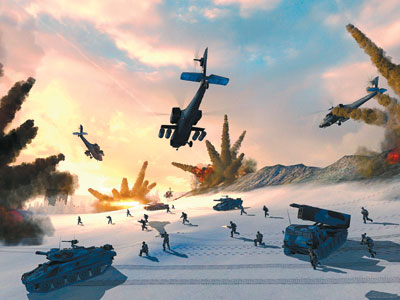|

未来战争技术或受电子游戏启发
Much of the U.S. military’s younger generation grew up playing video games that constantly tell players how well they’re doing on the virtual battlefield. A U.S. Army weapons engineer thinks that, with the right technologies, such gaming-world awareness could become real for tomorrow’s soldiers.
U.S. soldiers could go into battle wearing “Google Glasses” that warn of exhaustion levels by changing their vision’s tint* from green (“optimal*”) to yellow or red (“danger”), said David Musgrave, a manager at the U.S. Army’s Armament Research, Development and Engineering Center at the Picatinny Arsenal* in New Jersey. Weapon malfunctions on the battlefield can make a life-or-death difference. Yet Musgrave and his colleagues have to rely on written reports and anecdotes from soldiers who may struggle to recall the details of when, where and how a weapon system failed or performed incorrectly.
Musgrave said he found inspiration in his video game hobby.
Self-reporting weapons could help engineers troubleshoot* hardware or software problems.
Still, tracking weapons performance and soldier behavior in the real world presents a much more difficult challenge. Musgrave wants to avoid loading soldiers down with more hardware or the need to learn new procedures; so, his ideal starter system would piggyback* on existing army weapons software and focus on collecting just a few data points.
The army may eventually have a “tactical Internet” connecting all its soldiers and vehicles, a system that could report statistics in real-time and provide the foundation for the “gamification*” of the battlefield. Yet the technology already exists to make a primitive data-reporting system a reality within a decade, Musgrave said. (SD-Agencies)
|

